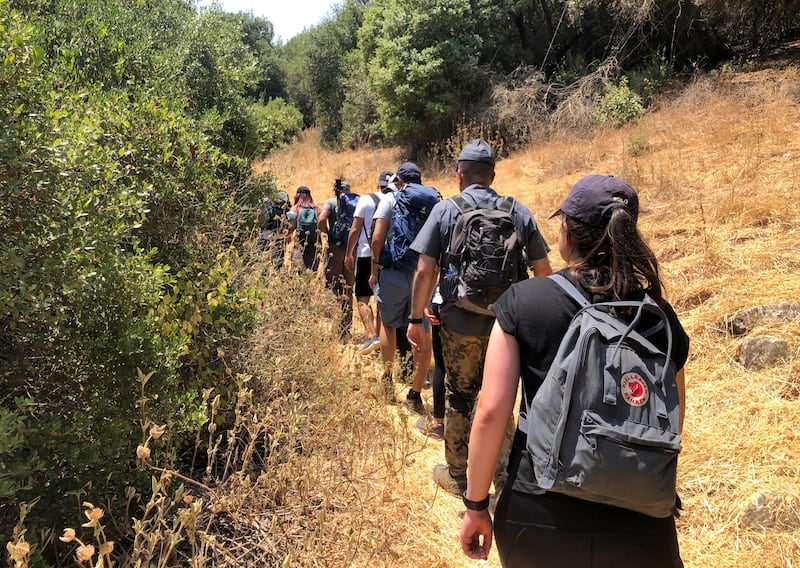Last month, the World Health Organisation released its first-ever report on hypertension, the world’s leading killer.
Please pause for a moment to consider that sentence. World’s leading killer. First report ever.
High blood pressure kills an estimated 10.8 million people every year. That’s more than all people killed by infectious diseases every year. More than killed by the Covid-19 pandemic at its worst. More than lost their lives in any year of war for all of human history, with the possible exception of the peak of the Second World War. It’s one death every three seconds – about 100 by the time you finish reading this essay.
Why, since hypertension is the world’s leading cause of death, did it take until 2023 for there to be a global report on hypertension?
I don’t know for sure, but I suspect three deadly reasons. First, cardiovascular disease – for which hypertension is the leading risk factor – is so common it has become invisible. Second, we assume it’s inevitable. Third, we may believe it’s “only” old people.
Hypertension is a pandemic, and the deadliest of our time. It’s not inevitable: it can be prevented, and, once it develops, treated to prevent heart attack, stroke, kidney failure, and other health problems. Millions of those who die are under age 70, particularly in lower-income countries; for those who die over age 70, uncontrolled hypertension has often caused years of disability and suffering.

The world’s most deadly condition is also the most neglected. The number of people living with the condition has more than doubled since 1990, to 1.3 billion. Only approximately one in five people with hypertension are adequately treated.
Hypertension prevalence is higher in Middle Eastern countries, on average, than anywhere else in the world. No country in the region has reached the 50 per cent control level that is a global benchmark of effective care.
But there’s good news. The first-ever report not only details the staggering burden of hypertension but also finds that over the next 25 years, improved blood pressure control could avert more than 70 million deaths and approximately 120 million strokes and 80 million heart attacks.
Prevention and effective treatment are possible – but they require societal action and leadership more than individual behaviour change. Improving hypertension control could save more lives than any other adult primary healthcare intervention.

The single-most effective way to prevent hypertension is to reduce the amount of sodium in the food everyone eats. Preindustrial societies consumed a small fraction of the sodium that we do currently and didn’t have any age-related increase in blood pressure – an increase we’ve come to view, incorrectly, as an inevitable part of the ageing process. We don’t have to become hunter-gatherers to reduce our sodium consumption, but reducing sodium is extremely difficult for individuals to do because there is so much sodium in our modern diet.
A best-practice policy is to require black stop-sign warnings on unhealthy food. This type of label has been shown to be much more effective than traffic light or other labels; it improves the options, as companies rapidly reformulate food to be healthier, and the choices, as consumers buy healthier food.
A second best-practice approach, promotion of low-sodium salts – which generally contain 15-30 per cent potassium – has been shown to substantially reduce the risk of heart attack and stroke. These salts are safe for everyone other than people with serious kidney disease, who should avoid high-potassium foods such as figs, dates and pomegranates as well as potassium-containing salt.
Treatment of hypertension works. Every health system should track and improve the proportion of the estimated number of all people with high blood pressure who have it under control. Only three countries reach even half: Canada, Costa Rica and South Korea. Every other country can improve a lot, and even those three countries can improve. Countries that improve their hypertension control rate will save lots of lives, because, by far, controlling hypertension can save more adult lives than any other clinical intervention.
The WHO report summarised data from 32 countries that have enrolled 17 million patients into treatment programmes that follow the WHO Hearts guidelines. My organisation, Resolve to Save Lives, partners with WHO and many of the countries implementing these programmes. The bottom line is that the programmes are highly effective through five strategies.
For starters, there is a need for practical, standardised, drug- and dose-specific treatment protocols. Effective protocols provide a straightforward stepwise formula; the best healthcare system in the US, Kaiser-Permanente, uses this type of protocol.
Next, there must be reliable access to affordable hypertension medicines and independently validated blood pressure monitors. Although treatment can cost as little as $5-10 for every patient every year, lack of access to medications condemns millions of people to avoidable heart attacks and strokes.
Just as vital is team‐based care, involving primary healthcare workers accessible to patients to provide care following physician‐directed protocols.
Patient‐centred services are also important, especially medications provided with no out-of-pocket cost and services that reduce barriers to adherence.
Finally, healthcare workers need user-centred information systems that make their jobs less difficult and improve quality of care. These systems will provide real‐time feedback on adherence and blood pressure control of individual patients and facilitate programme assessment and quality improvement initiatives by health systems, health directors, and ministry of health staff.
It costs about 1 cent a pill for the first-line medicines that treat high blood pressure, high cholesterol and high blood sugar. The main three medicines are amlodipine for blood pressure control, atorvastatin for cholesterol and metformin for sugar. All are generic and low-cost. It wouldn’t cost that much to offer these medications free to countries that set up systems to provide effective, accountable care.
For example, the Bangladesh Hypertension Control Initiative has enrolled 200,000 patients and achieved a blood pressure control rate of 60 per cent among treated patients. The programme has the potential to expand to offer treatment to every patient in the country quickly.
As countries in the Middle East, and particularly in the Gulf, gain economic strength and regional and global political influence, they can lead efforts to curb the world’s leading killer by implementing at home and supporting abroad proven means to prevent and treat hypertension.
Despite being the world’s leading single cause of death, less than 1 per cent of global health funding goes to fight cardiovascular disease. By leading at home and investing in philanthropic support abroad, a country can become the world leader against the world’s leading killer, accelerate progress towards the UN Sustainable Development Goals, save millions of lives, and help people live longer, stay healthier, and enjoy more productive lives with less disability.












